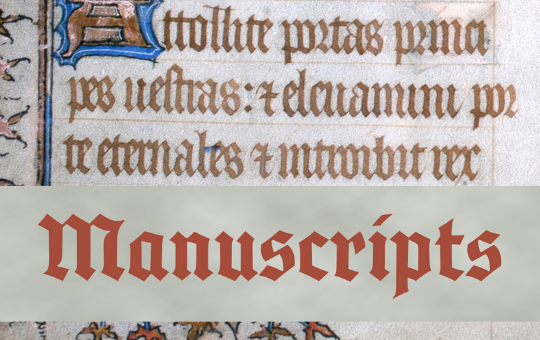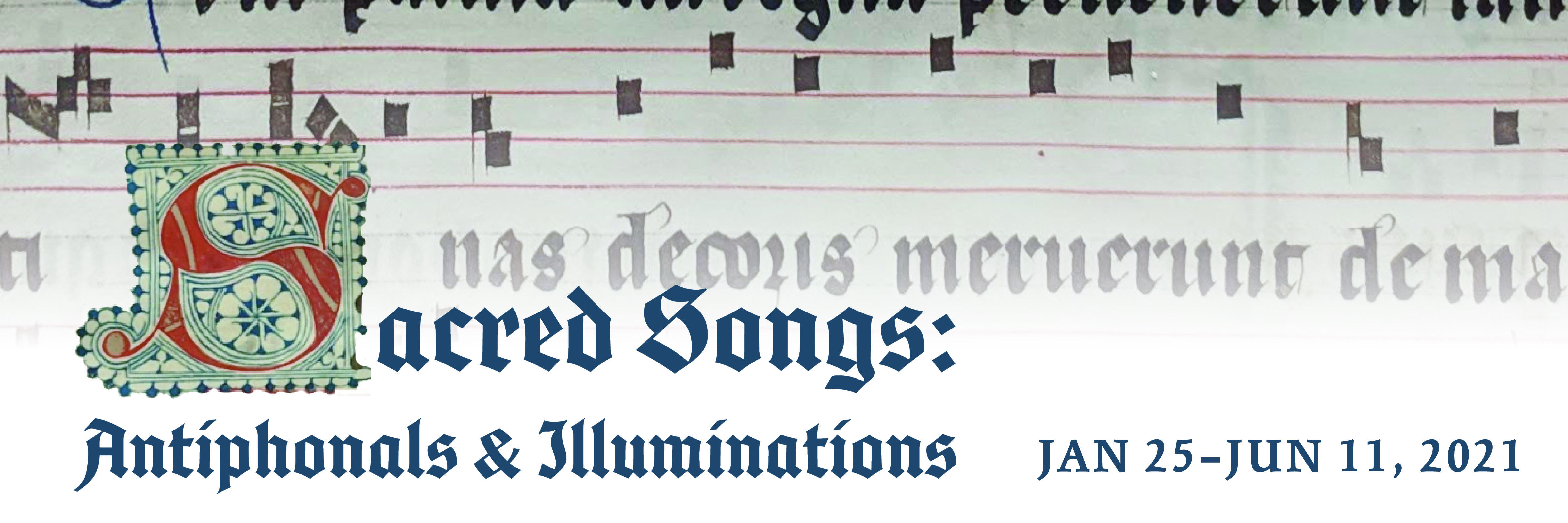
Written language has allowed us to organize and store information in collections of writings using various media for thousands of years. Religious manuscripts of Europe’s Medieval and early Renaissance periods constitute much of early book production. In particular, religious manuscripts consisted largely of Bibles, liturgy, psalters, Books of Hours and antiphonals, each presented in this exhibition. Many manuscripts were written on durable parchment (calf, goat, or sheep skin) or vellum (calf skin) and have stood the test of time. Even with growing book production, the majority of Medieval and Renaissance Europe was illiterate. Thus, ownership of bound manuscripts indicated social status. Individuals from wealthy families, and members of the clergy, were typically the only people privileged to receive formal education.
A trained scribe worked in a special room in a monastery/convent dedicated to book production, known as a scriptorium. Their output included bibles, psalter, antiphons and other religious texts. Different scribes produced the texts and the illuminations, each requiring special skill sets. Illuminations, the hand-rendered decorative images that accompany the text, embellish many manuscripts. These images helped readers focus on the meaning behind the texts and guide their worship toward a specific biblical story or holy figure. Illuminations often marked the beginnings of passages or to emphasize certain design elements.
